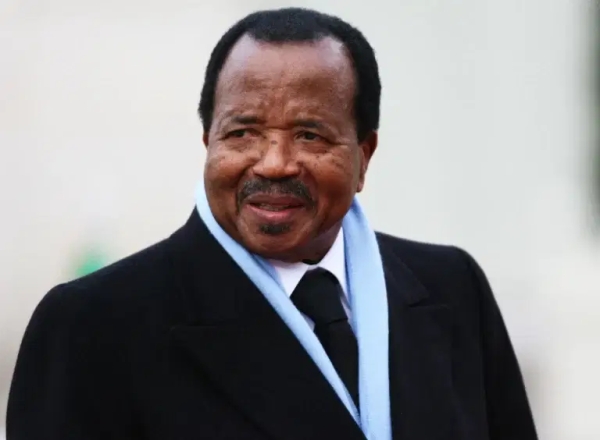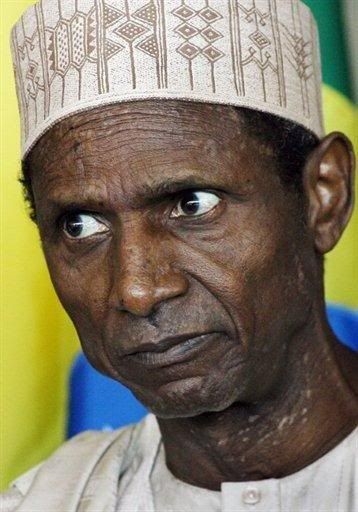News And PoliticsCommunications And EntertainmentSports And FitnessHealth And LifestyleOthersGeneralWorldnewsBusiness And MoneyNigerianewsRelationship And MarriageStories And PoemsArts And EducationScience And TechnologyCelebrityEntertainmentMotivationalsReligion And PrinciplesNewsFood And KitchenHealthPersonal Care And BeautyBusinessFamily And HolidaysStoriesIT And Computer ScienceSportsRelationshipsLawLifestyleComedyReligionLifetipsEducationMotivationAgriculturePoliticsAnnouncementUSMLE And MedicalsMoneyEngineeringPoemsSocial SciencesHistoryFoodGive AidBeautyMarriageQuestions And AnswersHobbies And HandiworksVehicles And MobilityTechnologyFamilyPrinciplesNatureQuotesFashionAdvertisementChildrenKitchenGive HelpArtsWomenSpiritualityQuestions AnsweredAnimalsHerbal MedicineSciencePersonal CareFitnessTravelSecurityOpinionMedicineHome RemedyMenReviewsHobbiesGiveawayHolidaysUsmleVehiclesHandiworksHalloweenQ&A
History
profile/4923images28.jpeg
Bikpadan111

Ten African Rulers Have Collectively Ruled For A Total Of 333 Years.
~1.2 mins read
Ten African rulers have collectively ruled for a total of 333 years.
The most experienced leaders in African countries.Africa is home to a number of historical rulers who came to power through various means, including elections, military coups, and royal successions.
Among these ten rulers, Cameroon's President Paul Biya, aged 91, has been in power since 1982. Reports of Biya's health and whereabouts became a topic of discussion across Africa this week following rumors of his passing.
Biya's most recent public appearance was at the China-Africa Summit in Beijing in early September. His absence from the recent UN General Assembly in New York and a summit of French-speaking countries (La Francophonie) in France fueled the speculations.
Cameroon's ambassador to France affirmed that Biya was "in good health" in Geneva, a place he frequently visits. Moreover, Cameroon's government spokesman, René Sadi, officially refuted the rumors, ensuring that Biya would return home "in the next few days.
"Here are the ten longest-serving African heads of state:
1. Teodoro Obiang Nguema Mbasogo (Equatorial Guinea) - 41 years in power.
2. Paul Biya (Cameroon) - 41 years in power.
3. Denis Sassou Nguesso (Congo) - a total of 40 years in power.
4. Yoweri Museveni (Uganda) - 38 years of leadership.
5. King Mswati III (Eswatini) - 38 years in power.
6. Idriss Déby (Chad) - 30 years in power until his demise in 2021.
7. Isaias Afwerki (Eritrea) - 31 years in power.
8. Ismail Omar Guelleh (Djibouti) - 25 years in power.
9. King Mohammed VI (Morocco) - 25 years in power.
10. Paul Kagame (Rwanda) - 24 years in power.These leaders have significantly influenced the political landscape of Africa for over a century.
profile/4923images28.jpeg
Bikpadan111

Late Former President Umaru Musa Yar'Adua Of Nigeria: A Legacy Of Integrity And Progress
~2.1 mins read
Late Former President Umaru Musa Yar'Adua of Nigeria: A Legacy of Integrity and Progress
Late President Umaru Musa Yar'Adua, who served from 2007 until his passing in 2010, is widely regarded as one of the best presidents in Nigeria's history. His tenure was marked by significant achievements and a commitment to good governance, integrity, and the well-being of the Nigerian people.
*Integrity and Transparency*
1. *Anti-Corruption Efforts*: Yar'Adua's administration launched several initiatives to combat corruption, including the establishment of the Independent Corrupt Practices Commission (ICPC).
2. *Financial Transparency*: He introduced measures to increase transparency in government finances, such as the publication of monthly budget execution reports.
*Economic Development*
1. *Infrastructure Development*: Yar'Adua's administration invested heavily in infrastructure projects, including roads, bridges, and energy generation.
2. *Economic Reforms*: He implemented policies to promote economic growth, such as the National Economic Management Team (NEMT) and the Economic Recovery Program (ERP).
*Social Welfare*
1. *Healthcare*: Yar'Adua's administration launched initiatives to improve healthcare services, including the establishment of the National Health Insurance Scheme (NHIS).
2. *Education*: He introduced programs to enhance education, such as the National Teachers' Institute (NTI) and the Nigerian Education System Reform (NESR).
*Good Governance*
1. *Constitutional Reforms*: Yar'Adua's administration initiated constitutional reforms to strengthen democratic institutions and promote good governance.
2. *Security and Stability*: He implemented measures to address security challenges, such as the establishment of the Presidential Committee on the Niger Delta (PCCND).
*Legacy*
Yar'Adua's legacy continues to inspire Nigerians, and his presidency serves as a model for good governance and integrity. His commitment to the well-being of the Nigerian people and his efforts to promote economic development, social welfare, and good governance have left a lasting impact on the country.
*Why He Stands Out*
1. *Integrity*: Yar'Adua's reputation for integrity and honesty set him apart from other leaders.
2. *Humility*: He was known for his humility and willingness to listen to others.
3. *Visionary Leadership*: Yar'Adua had a clear vision for Nigeria's development and worked tirelessly to achieve it.
*Conclusion*
Late President Umaru Musa Yar'Adua's presidency was a testament to the power of integrity, transparency, and visionary leadership. His legacy continues to inspire Nigerians, and his presidency serves as a model for good governance and development. As Nigeria continues to navigate its challenges, Yar'Adua's example remains a guiding light for a brighter future.
*Recommendations*
1. *Emulate Yar'Adua's Integrity*: Leaders should strive to emulate Yar'Adua's commitment to integrity and transparency.
2. *Prioritize Good Governance*: Governments should prioritize good governance, economic development, and social welfare.
3. *Learn from Yar'Adua's Legacy*: Nigerians should learn from Yar'Adua's legacy and work towards creating a better future for the country.
profile/4923images28.jpeg
Bikpadan111

_Kamala Harris: A Rising Star In American Politics_
~2.0 mins read
Kamala Devi Harris is an American politician and attorney who has been serving as the Vice President of the United States since 2021. She is the first woman, the first Black American, and the first South Asian American to hold the office.
*Early Life and Education*
- Born: October 20, 1964, in Oakland, California
- Parents: Donald Harris (Jamaican-American) and Shyamala Gopalan (Indian-American)
- Education: Howard University (BA), University of California, Hastings College of the Law (JD)
*Career*
- District Attorney of San Francisco (2004-2011)
- Attorney General of California (2011-2017)
- United States Senator from California (2017-2021)
- Vice President of the United States (2021-present)
*Presidential Campaign*
- Announced candidacy: February 1, 2019
- Platform:
- Healthcare: Medicare for All
- Immigration: Pathway to citizenship for undocumented immigrants
- Climate Change: Green New Deal
- Education: Free public college and reduced student loans
- Gun Control: Background checks and red flag laws
*Notable Achievements*
- First woman to serve as California's Attorney General
- First Asian American and Pacific Islander to serve in the United States Senate
- First woman to serve as Vice President of the United States
- Author of "The Truths We Hold" and "Let's Be the Change"
*Personal Life*
- Married to Douglas Emhoff since 2014
- Step-mother to Emhoff's two children from a previous marriage
- Known for her advocacy on women's rights, racial justice, and LGBTQ+ issues
*Challenges and Controversies*
- Criticized for her record as a prosecutor and Attorney General
- Accused of being too moderate on some issues
- Faces opposition from some progressive Democrats
*Conclusion*
Kamala Harris is a trailblazing politician who has made history at every turn. Her commitment to social justice, equality, and human rights has inspired a generation of Americans. As she runs for president, her experience, passion, and leadership style make her a formidable candidate.
*Additional Resources*
- _The Truths We Hold_ by Kamala Harris
- _Let's Be the Change_ by Kamala Harris
- _Kamala Harris: The Essential Biography_ by Sari Horwitz and Amy Wang
*Recommended Resources*
- _Kamala Harris for President_ official campaign website
- _Kamala Harris_ official government website
- _Kamala Harris_ on Wikipedia
Advertisement
Loading...
 Bikpadan111
Bikpadan111